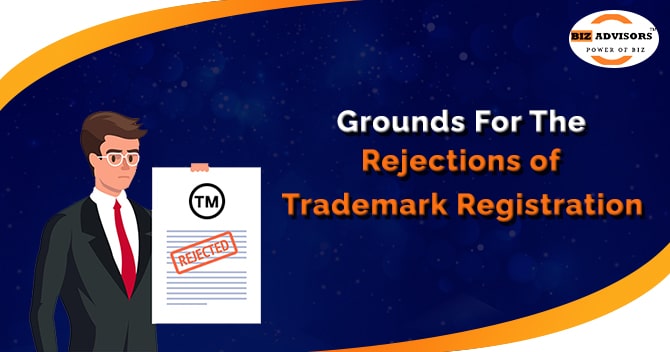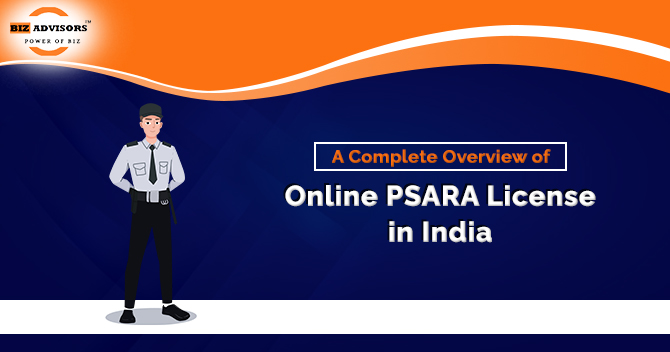There are many grounds for rejection of Trademark Registration. A trademark is a type of intellectual property right that includes a logo, graphics, signage, and other elements that set a product apart from others. A trademark for a product aids in preventing unauthorized usage of it. The Indian Trademarks Act, 1999 allows for the registration of trademarks. However, a trademark may occasionally have grounds for the rejection of Trademark Registration. The trademark application procedure is lengthy, and many businesses start building their brands around a trademark even while the application is still pending. As a result, we examine some of the most common reasons for the rejection of Trademark Registration. Here in this blog we are going to learn about the different grounds for the rejection of the Trademark Registration.
What is Trademark?
In simple terms, a Trademark is a logo or brand which represents the business of the Trademark owner. A visual symbol like a name, word signature, device, numerals, labels or combination of colours used by the trademark owner for goods or services or any other articles of commerce to distinguish it from all other similar goods or services originating from the different businesses in the market.
A trademark can be a brand name, word, symbol, logo, wrapper, packaging labels, taglines or a combination of these and are used by the manufacturers or service providers to identify their own products and/or services. A mark is used to distinguish the products or services of the owner from those of its other competitors in the market.
Grounds for the Rejection of Trademark Registration
The officers of the registry meticulously examine each trademark application, and if they discover any violations of the law or of existing registered marks, they have the authority to reject the mark’s application for registration. At this moment, the application status will read “Marker for Exam.” The following are the reasons for the Rejection of Trademark Registration.
- Application Procedure
The application’s proper filing and presentation of all relevant material in accordance with the Act’s requirements are the first things the examiner will check. The application will be rejected if the examiner discovers any errors in the procedure or the supporting papers.
- Similar to Other Registered Trademark
One must always determine whether their mark is identical to or confusingly similar to an existing trademark before filing for one. You can accomplish this by conducting a public search on the controller general’s website for patents, designs, and trademarks, or you can simply hire a lawyer who specializes in trademark applications. The examiner has the authority to reject an application if he determines that the mark being sought is confusingly similar to another mark that has already been registered or is currently registered.
- Descriptive Language or Style
Whether the mark includes any words or phrases that are typically used to describe products. It would be unjust to other individuals, for instance, to try to trademark the word SWEET for the purpose of promoting goods like chocolate or sweets.
- Generic Language or Style
General terms like “pens” or “pencils” cannot be trademarked to sell pens or pencils since more than one business cannot use them exclusively. As a result, the examiner may decide not to register such a mark.
- Offensive Language or Imagery
An offensive name or design[1] cannot be used in a trademark since doing so would be against public decency and order. Therefore, the examiner will typically reject words of designs that are offensive.
- Ambiguous Language or Design
Any mark that could mislead the consumer about the product’s origin, maker, quality, material, etc. is considered confusing or deceptive. For instance, if a FISH is used as the mark but the product is merely red meat, the mark may be disregarded because it is deceptive.
- Official Symbols or Language
The examiner will reject the mark’s application for registration if it incorporates any official words, terms, designs, or images because it is detrimental to the general welfare. It may mislead the buyer into believing that an official body has approved of it. For instance, if the trademark represents a country’s flag, it will be denied for this reason.
- Restrictions and limitations
The examiner may reject the mark for registration as is if he believes it to be valid but needs certain modifications to the way it is used or looks.
Trademark Objection
The examiner may object to the mark’s registration after carefully reviewing it for registration. The application’s status in this situation will read “Objected.” The applicant now gets the opportunity to present his argument to the examiner. The objection is often made in accordance with Sections 9 or 11 of the Act.
- An Objection Under Section 9
The Act’s Section 9 lays out specific reasons for the rejection of Trademark Registration. Any mark that is: Section 9 rejects the mark. Descriptive, general, misleading regarding the place of origin of the goods or services, misleading about their nature, misleading about their quality.
- Objection Under Section 11
Relative grounds for refusal are provided in Section 11 of the Act. If the examiner objects under this provision, it will be because the mark is identical to another trademark that has already been registered. In this situation, the examiner will attach both the trademarks that the mark is in conflict with and the portions of the mark that are in dispute. At this point, the applicant must override the examiner’s objections. According to the section where the Trademark objection was raised, this must be done.
Appeal for the Rejection of Trademark Registration
The applicant’s ultimate recourse, once the registration is rejected, is to file an appeal with the Intellectual Property Appellate Board (hereinafter referred to as IPAB). Within three months after the day the registrar issued the rejection decision, an appeal to the IPAB must be submitted. If the appellant can provide sufficient justification for why he could not contact the IPAB prior to the deadline, this time limit may be extended. Depending on the type of trademark registration the applicant or appellant seeks, the IPAB has two distinct mechanisms for handling appeals. The Trademarks (Applications, Appeals, and Fees to the Intellectual Property Appellate Board) Rules must be followed while filing the appeal.
Conclusion
Understanding the significance of trademark protection is crucial. It is crucial to ensure trademarks are registered for the company because the entire concept of promotion, advertising, and sales is to uphold the brand image. As a result, anyone submitting an application to register a trademark must do so properly to prevent the rejection of Trademark Registration. Many owners fail to possess the necessary knowledge of the trademark when they submit a trademark application, which results in the rejection of Trademark Registration and a waste of important time in enforcing the trademark rights. Seek professional help to avoid the rejection of Trademark Registration. You can also directly reach at Bizadvisors.io in case you need any help regarding the “rejection of Trademark Registration”.
Read our article:A Complete Guide on Trademark Registration in India
 9559179325
9559179325 9559179325
9559179325





